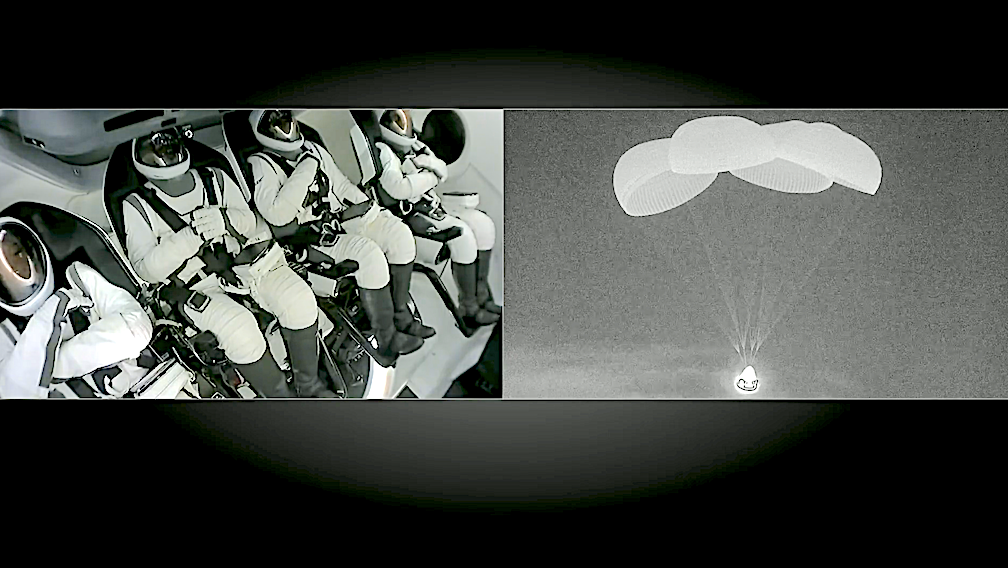
After nearly five days on orbit, Dragon and the Polaris Dawn crew safely splashed down at 3:36 a.m. ET on Sunday, September 15 off the coast of Dry Tortugas, Florida, completing the first human spaceflight mission of the Polaris Program.
During their multi-day mission to orbit the passengers completed the first spacewalk of private astronauts, using spacesuit technology developed by SpaceX, and ascended to 1,400 kilometers, the highest orbit with humans since the Apollo 17 moon mission.
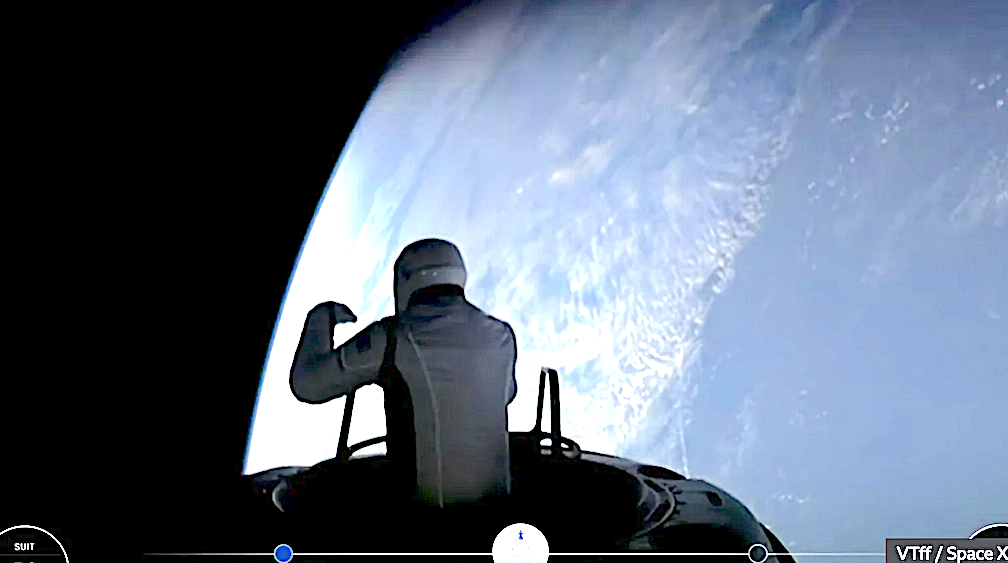
Isaacman became only the 264th person to perform a spacewalk since the former Soviet Union scored the first in 1965, and SpaceX’s Sarah Gillis the 265th. Until now, all spacewalks were done by professional astronauts.

The Dragon capsule made splashdown off the coast of Florida shortly after 03:37 local time (07:37 GMT), in an event stream lived by SpaceX.
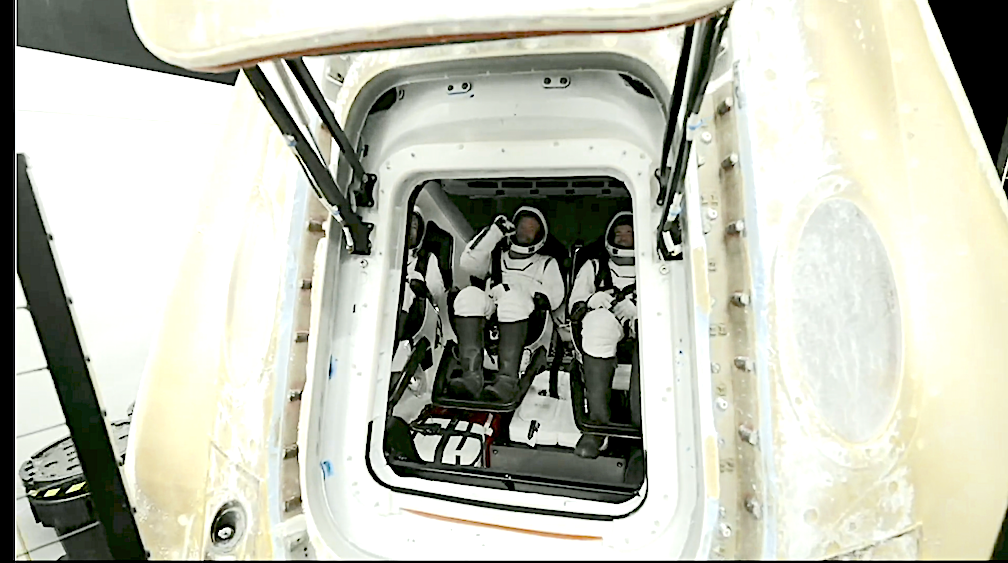
“We are mission complete,” Isaacman radioed as the capsule bobbed in the water, awaiting the recovery team. Within an hour, all four were out of their spacecraft, pumping their fists with joy as they emerged onto the ship’s deck.
NASA said the mission represented “a giant leap forward” for the commercial space industry.
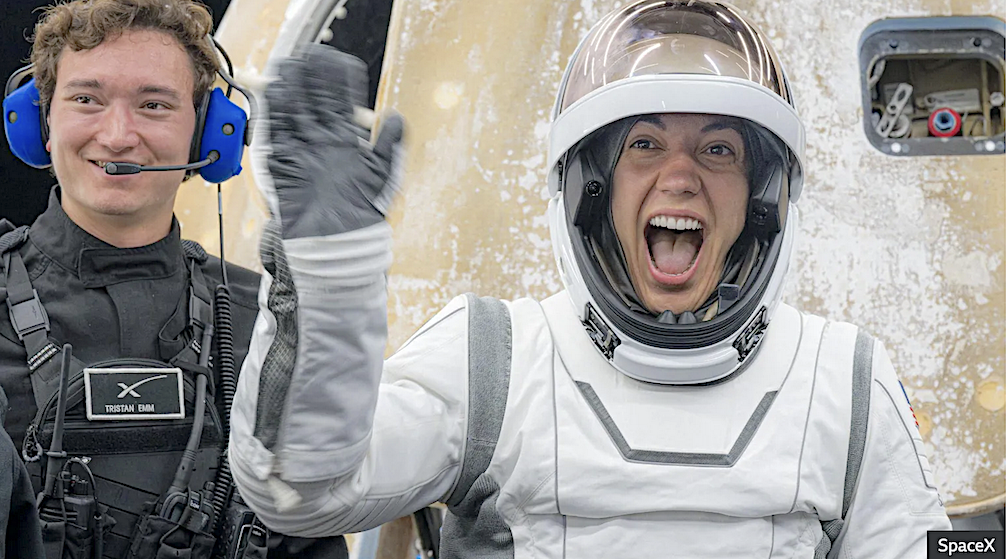
They tested laser-based communications with Starlink a satellite broadband provider, and conducted 36 research studies and experiments from 31 partner institutions designed to advance both human health on Earth and during long-duration spaceflight, and test Starlink laser-based communications in space.
All photos were captured on Sunday, September 15, by Satnews from SpaceX’s video stream.
SpaceX’s Success at last as Polaris Dawn soars to the highest orbit with humans since the Apollo 17
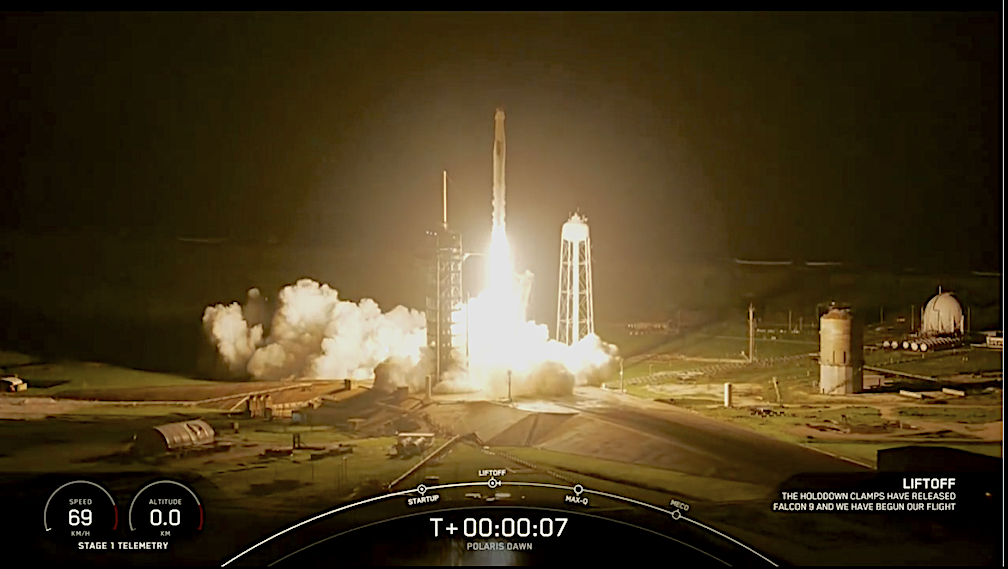
SpaceX announced that on Tuesday, September 10 at 5:23 a.m. ET, Falcon 9 launched Polaris Dawn to low-Earth orbit from Launch Complex 39A at NASA’s Kennedy Space Center in Florida.
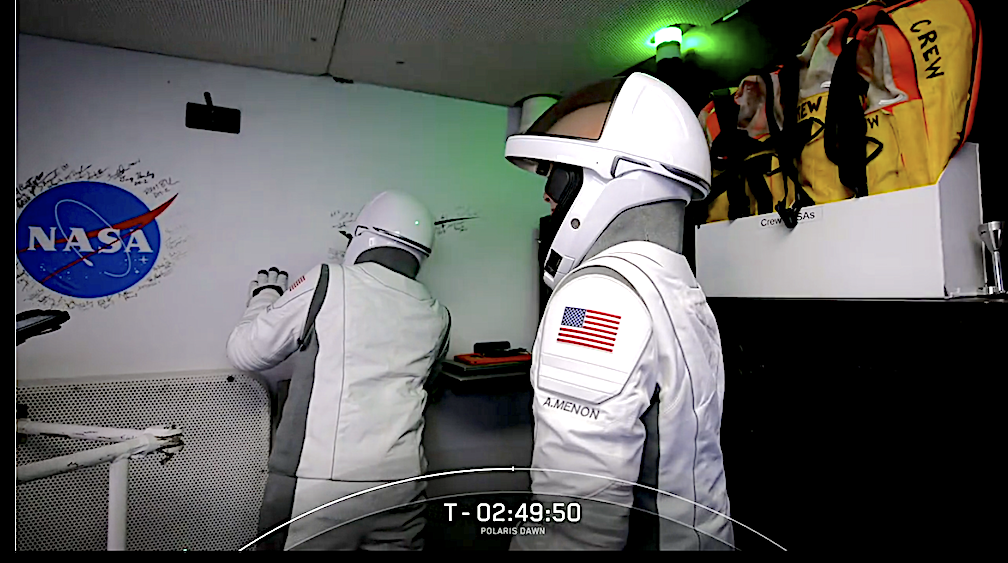
It’s OK to write on these walls. The astronauts sign their names adding to the autographs of former brave astronauts. Photo captured on Tuesday, September 10, by Satnews from SpaceX’s video stream.
During their multi-day mission to orbit the passengers will attempt the first spacewalk of private astronauts, using spacesuit technology developed by SpaceX, and ascend to 1,400 kilometers, the highest orbit with humans since the Apollo 17 moon mission.
They will also test laser-based communications with Starlink a satellite broadband provider, and conduct 36 research studies and experiments from 31 partner institutions designed to advance both human health on Earth and during long-duration spaceflight, and test Starlink laser-based communications in space.
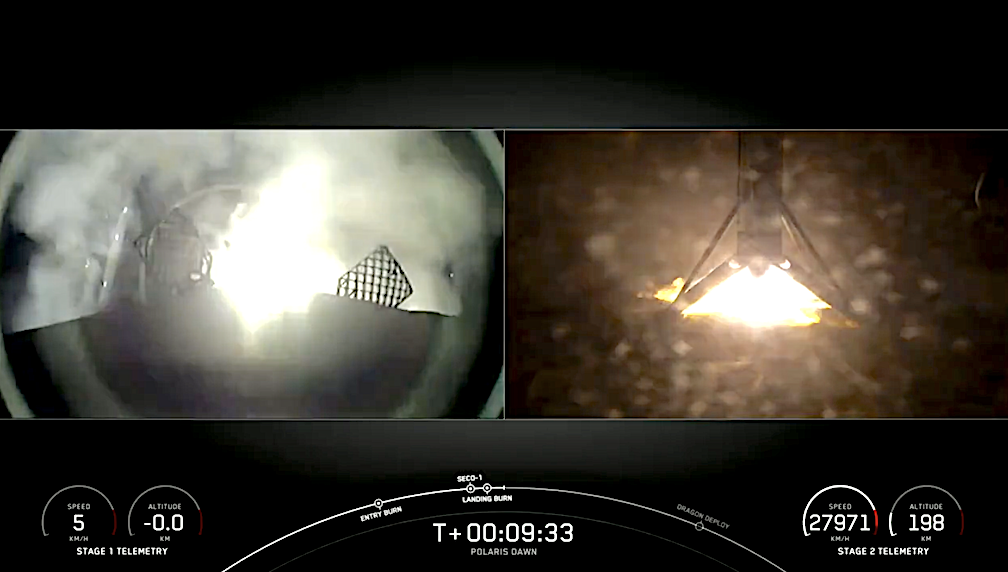
Following stage separation, Falcon 9’s first stage landed on the Just Read the Instructions droneship stationed in the Atlantic Ocean.
SpaceX is standing on Tuesday for Polaris Dawn launch, so far
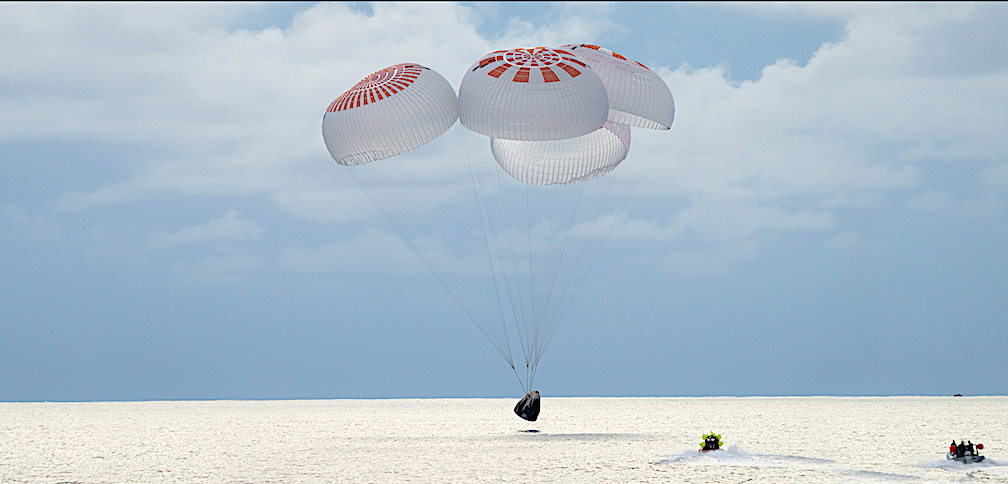
After three days orbiting Earth, Dragon and the Inspiration4 crew – the world’s first civilian mission to orbit – safely splashed down off the coast of Florida at 7:06 p.m. EDT on Saturday, September 18, 2021, completing their first multi-day low Earth orbit mission.
After delays too numrous to mention at SpaceX’s website today they officially announced that:
SpaceX is targeting Tuesday, September 10 at 3:38 a.m. ET for Falcon 9’s launch of Polaris Dawn to low-Earth orbit from Launch Complex 39A at NASA’s Kennedy Space Center in Florida. There are two additional launch opportunities within the four-hour window at 5:23 a.m. ET and 7:09 a.m. ET. If needed, backup opportunities are available on Wednesday, September 11 at the same times.
According to weather officials, there’s a 40% chance of favorable weather conditions at the time of the launch. The forecast calls for a temperature of 80°F, moderate rain, 100% cloud cover, a wind speed of 6mph and 1.95in of rain.
A live webcast of this mission will begin about 3.5 hours prior to liftoff, which you can watch here and on X @SpaceX.
UPDATE: SpaceX’s Polaris Dawn no-go on Monday potential new launch date
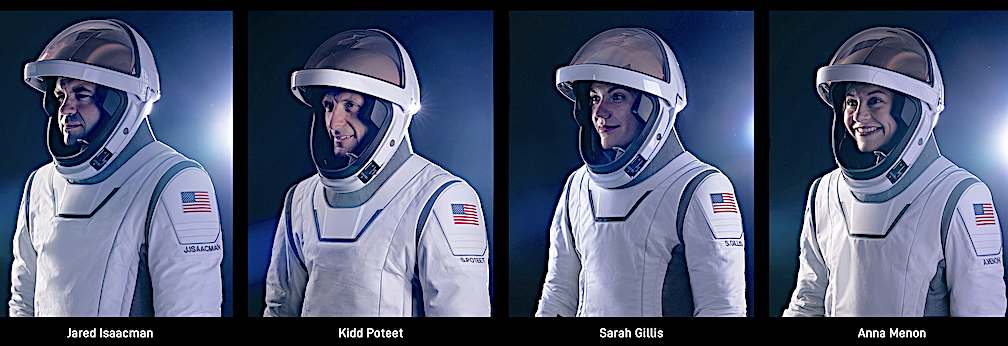
A new date, Tuesday, September 10th, from 12:38 AM – 4:09 AM PDT, has been named for the Polaris Dawn mission sending astronauts from LC-39A, Kennedy Space Center, Florida that will attempt the first spacewalk of private astronauts, using spacesuit technology developed by SpaceX. SpaceX teams will continue to monitor weather for favorable launch and return conditions.
They will also conduct 36 research studies and experiments from 31 partner institutions designed to advance both human health on Earth and during long-duration spaceflight, and test Starlink laser-based communications in space.
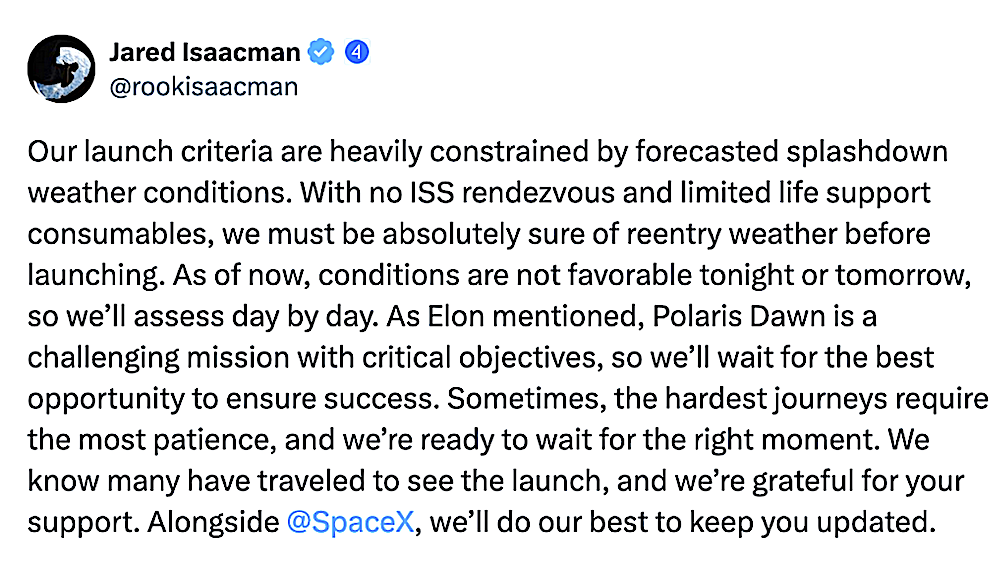
The forecast calls for a temperature of 81°F, light rain, 100% cloud cover, a wind speed of 9mph and 0.96 in of rain.
UPDATE: SpaceX’s Polaris Dawn commercial astronauts’ mission delayed now ’til Monday… or later
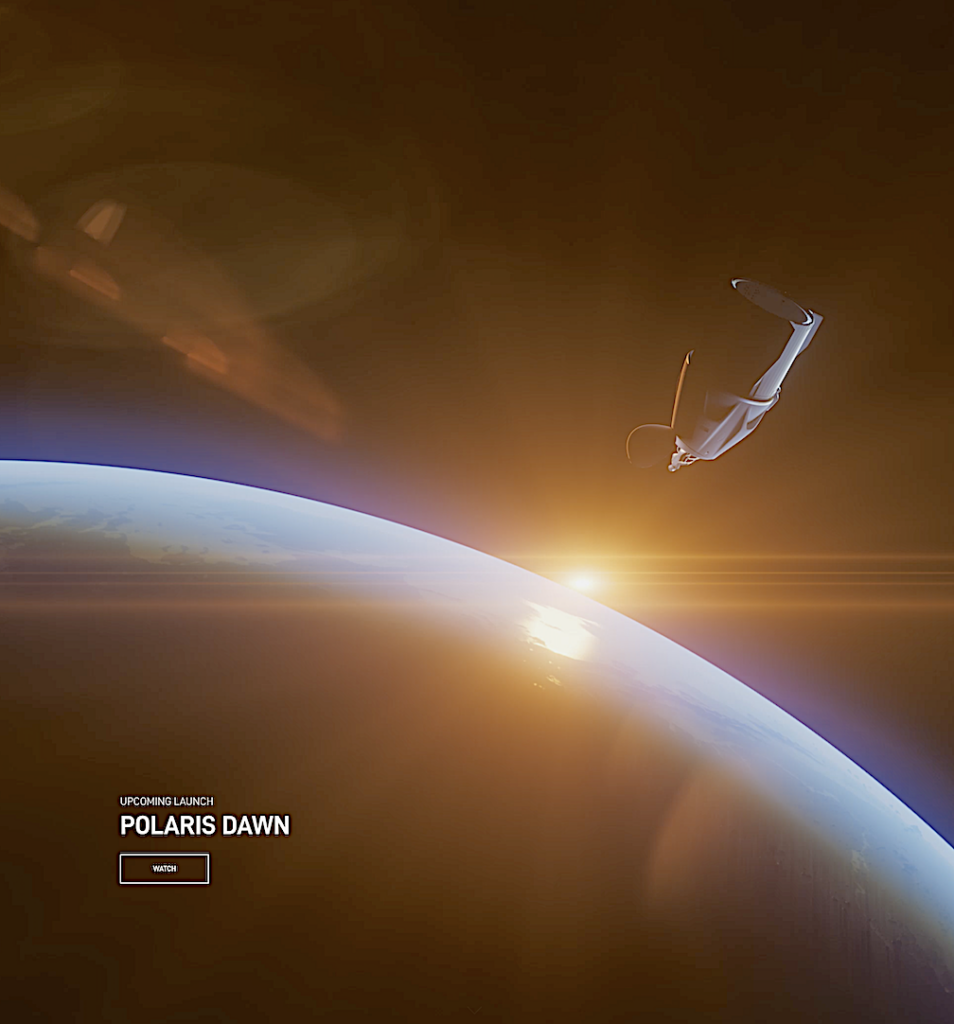
A new date, Monday, September 9th, from 12:38 AM – 4:09 AM PDT, has been named for the Polaris Dawn mission sending astronauts from LC-39A, Kennedy Space Center, Florida that will attempt the first spacewalk of private astronauts, using spacesuit technology developed by SpaceX. The Crew Dragon will return to a splashdown at sea, which is why the indefinite delays due to turgid ocean waters from huge storms and record rainfall that is not conducive for a human landing.
This is the first of the 3 “Polaris” series missions paid for by billionaire Jared Isaacman. This is his second trip to space. He will be joined on the all-private mission by pilot Scott “Kidd” Poteet, and SpaceX employees Sarah Gillis and Anna Menon. The mission will include the first private citizen spacewalk and ascend to 1,400 kilometers, the highest orbit with humans since the Apollo 17 moon mission. They will also test laser-based communications with Starlink a satellite broadband provider.
The first stage booster B1083 is making its fourth flight and will land on the drone ship “A Shortfall of Gravitas” about nine and a half minutes after launch.
Delayed from November and December 2022, March 2023, April 2024, early summer 2024, August 26 and 27. And again delayed from August 28 until September 9 or later due to poor recovery weather at the end of the planned mission timeline.
SpaceX’s Polaris Dawn commercial astronauts’ mission launch date moved again
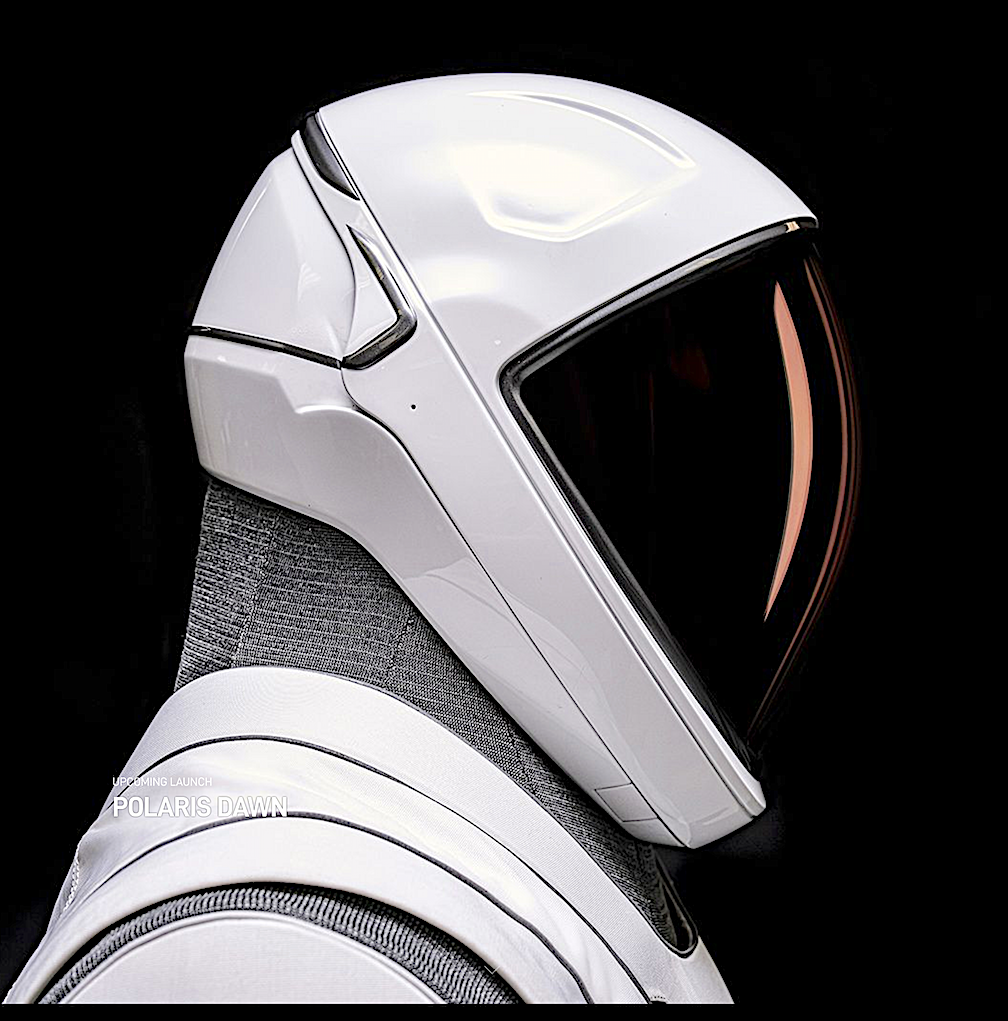
A new date, Saturday, September 7th, from 12:38 AM – 4:09 AM PDT, has been named for the Polaris Dawn mission sending astronauts who will attempt the first spacewalk of private astronauts, using spacesuit technology developed by SpaceX from LC-39A, Kennedy Space Center, Florida. They will also test laser-based communications with Starlink a satellite broadband provider.
The risks are serious as the crew will attempt to achieve the highest orbit of Earth ever recorded since the Apollo program and will pass through heavy radiation and risk potentially significant damage from small space rocks and debris.
During their multi-day mission to orbit, Dragon and the crew will participate in the first-ever extravehicular activity (EVA) by commercial astronauts wearing SpaceX-developed EVA suits. Additionally, they will conduct 36 research studies and experiments from 31 partner institutions designed to advance both human health on Earth and during long-duration spaceflight, and test Starlink laser-based communications in space.
Despite numerous delays Jared Isaacman stressed the importance of safety first.
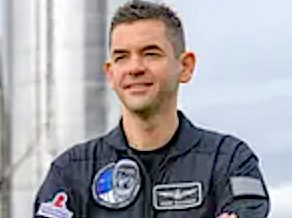
Jared Isaacman
- Birthday: 02/11/1983
- Role: Commander
- Nationality: American
- First Flight: 09/16/2021
- Last Flight: 09/16/2021
Jared Isaacman is an American businessman and pilot. He is the co-founder and CEO of Harbortouch, a payment processor and manufacturer of payment-processing hardware.
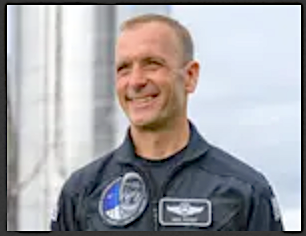
Scott Poteet
- Birthday: 01/01/1970
- Role: Pilot
- Nationality: American
Scott “Kidd” Poteet is a retired United States Air Force Lieutenant Colonel who served 20 years in various roles that include Commander of the 64th Aggressor Squadron, USAF Thunderbird #4 Demonstration Pilot, USAF Weapons School Graduate, Operational Test & Evaluation Pilot, and Flight Examiner. Kidd is a command pilot with over 3,200 flying hours in the F-16, A-4, T-38, T-37, T-3, and Alpha Jet. Kidd has logged over 400 hours of combat time during Operations Northern Watch, Southern Watch, Joint Guardian, Freedom’s Sentinel, and Resolute Support.
Following his Air Force career, Kidd served in various roles to include Director of Business Development at Draken International and VP of Strategy at Shift4 (NYSE: FOUR). He most recently served as the Mission Director of Inspiration4. Kidd is also an accomplished collegiate runner and triathlete, competing in 15 Ironman triathlons since 2000, which includes four Ironman World Championships in Kailua-Kona, Hawaii.
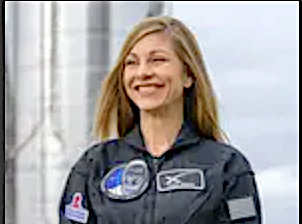
Anna Menon
- Role: Mission Specialist
- Nationality: American
Anna Menon is a Lead Space Operations Engineer at SpaceX, where she manages the development of crew operations and serves in mission control as both a Mission Director and crew communicator. During her tenure at SpaceX, she has led the implementation of Dragon’s crew capabilities, helped create the crew communicator operator role, and developed critical operational responses to vehicle emergencies such as a fire or cabin depressurization. Anna served in mission control during multiple Dragon missions, such as Demo-2, Crew-1, CRS-22, and CRS-23.
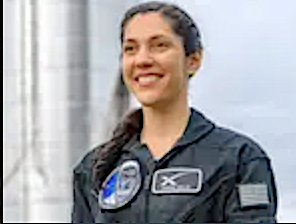
Sarah Gillis
- Birthday: 01/01/1990
- Role: Mission Specialist
- Nationality: American
Sarah Gillis is a Lead Space Operations Engineer at SpaceX, responsible for overseeing the company’s astronaut training program. This includes the development of mission-specific curriculum and training execution for both NASA and commercial astronauts who fly aboard the Dragon spacecraft. She prepared NASA astronauts for the Demo-2 and Crew-1 missions as well as directly trained the Inspiration4 astronauts. She is an experienced mission control operator, who has supported real-time operations for Dragon’s cargo resupply missions to and from the International Space Station as a Navigation Officer, and as a crew communicator for Dragon’s human spaceflight missions.
SpaceX’s new launch date for Polaris Dawn’s mission that includes risks for astronauts
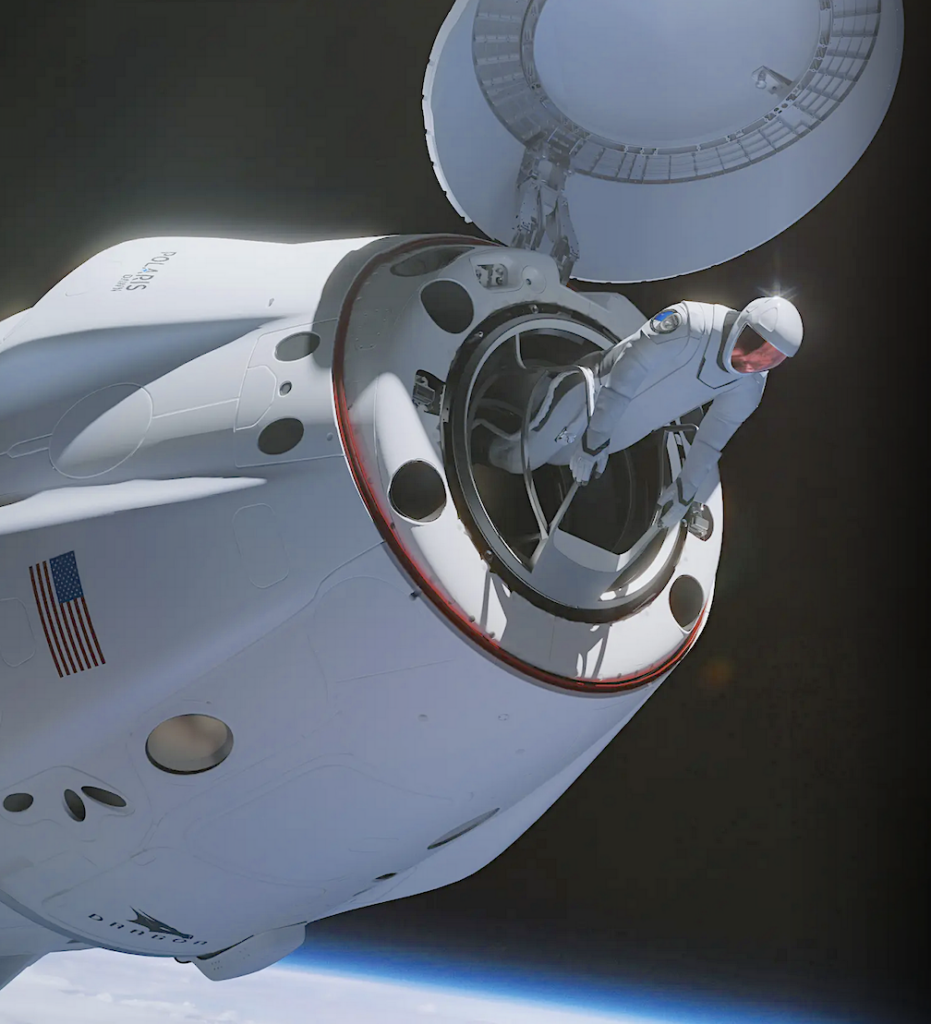
SpaceX’s Polaris Dawn mission is now looking at Friday as the launch date. The company had originally received permission from the Federal Aviation Administration to launch early Wednesday morning, with a backup date of Thursday morning, but according to the FAA, the launch will now wait until early Friday morning from 12:38 AM – 4:09 AM PDT.
While the Polaris Dawn’s crew will attempt the first spacewalk of private astronauts, using spacesuit technology developed by SpaceX, they will also test laser-based communications with satellite broadband provider Starlink. CEO Elon Musk plans this as part of an effort to pave the way for travel to places including Mars.
The risks are very real as the crew will attempt to achieve the highest orbit of Earth ever recorded and will pass through heavy radiation and risk potentially significant damage from small space rocks and debris.
During their multi-day mission to orbit, Dragon and the crew will attempt to reach the highest Earth orbit ever flown since the Apollo program and participate in the first-ever extravehicular activity (EVA) by commercial astronauts wearing SpaceX-developed EVA suits. They will also conduct 36 research studies and experiments from 31 partner institutions designed to advance both human health on Earth and during long-duration spaceflight, and test Starlink laser-based communications in space.
SpaceX files new launch schedule with FAA for Polaris Dawn as first available window opens
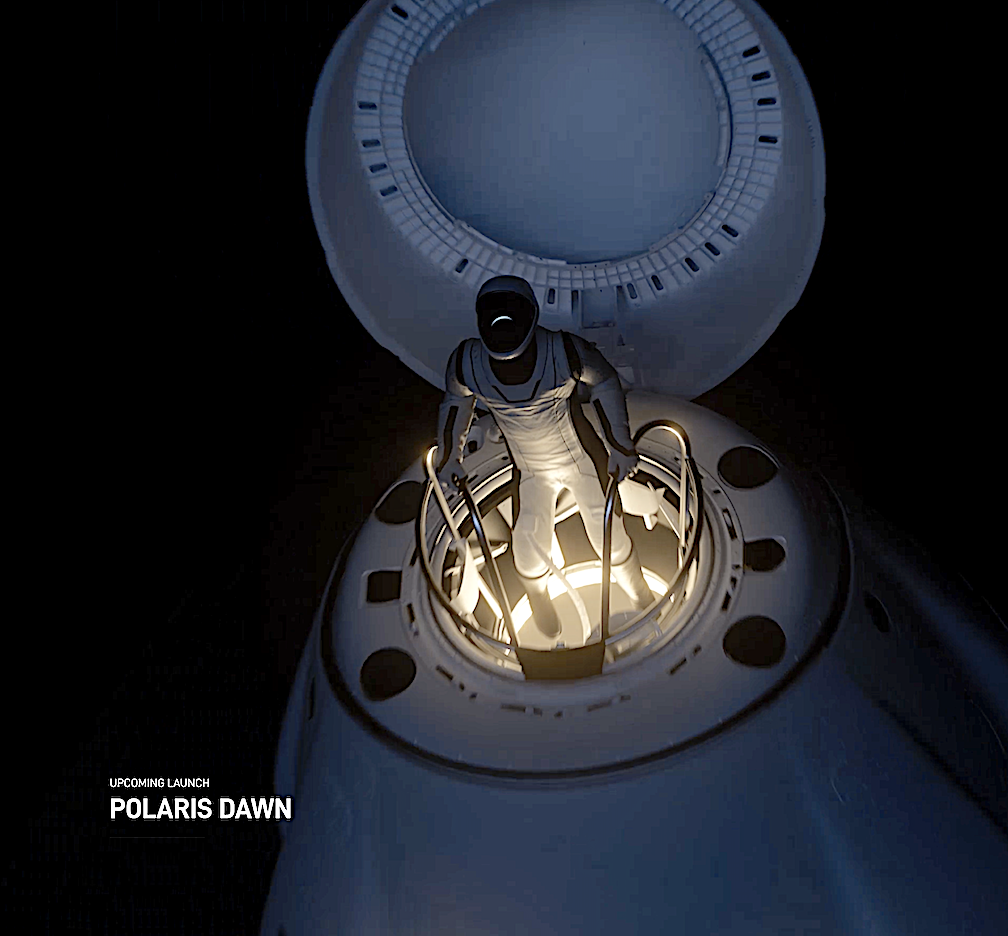
A new launch date for SpaceX’s Polaris Dawn Mission is set after crews were delayed several times due to system checks, a helium leak, and most recently, unfavorable weather. SpaceX filed a new launch schedule with the Federal Aviation Administration, with the first window opening at 3:38 a.m. on Wednesday, September 4.
This is a project that has suffered numerous delays over years, from November and December 2022, March 2023, April 2024, early summer 2024, August 26 and 27.
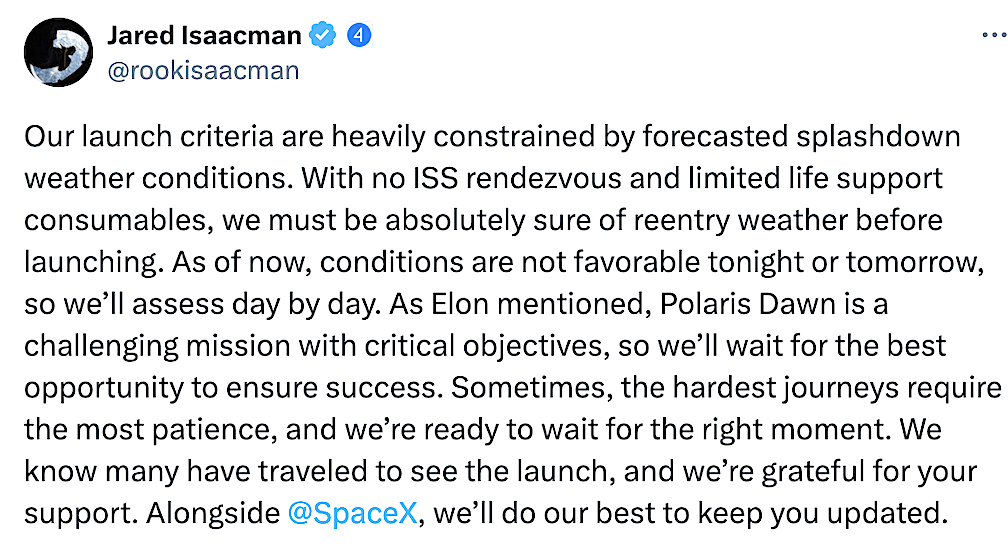
Then the most recent delay from August 28 due to poor recovery weather at the end of the planned mission timeline.
Scott Poteet from Durham, New Hampshire, is the mission pilot. In a post on X, Poteet said he’s hopeful for a clear launch day.


Weather conditions are anticipated to be clear for a projected launch date of Polaris Dawn, SpaceX’s Falcon 9 rocket that will launch Crew Dragon spacecraft on September 1 at 3:38 a.m. EDT (0738 UTC) from LC-39A, Kennedy Space Center, Florida. This is a project that has suffered numerous delays over years, from November and December 2022, March 2023, April 2024, early summer 2024, August 26 and 27.
Then the most recent delay from August 28 due to poor recovery weather at the end of the planned mission timeline.n
During their multi-day mission to orbit, Dragon and the crew will endeavor to reach the highest Earth orbit ever flown since the Apollo program and participate in the first-ever extravehicular activity (EVA) by commercial astronauts wearing SpaceX-developed EVA suits. They will also conduct 36 research studies and experiments from 31 partner institutions designed to advance both human health on Earth and during long-duration spaceflight, and test Starlink laser-based communications in space.

The Polaris Dawn crew will combine their expertise, knowledge, and passion for spaceflight to further human space exploration. This will be the first human spaceflight for Mission Pilot Kidd Poteet, Mission Specialist Sarah Gillis, and Mission Specialist and Medical Officer Anna Menon. The Polaris Dawn mission will be commanded by billionaire Jared Isaacman, making his second trip to space. He will be joined on the all-private mission by pilot Scott “Kidd” Poteet, and SpaceX employees Sarah Gillis and Anna Menon. The first stage booster B1083 is making its fourth flight and will land on the drone ship “A Shortfall of Gravitas” about nine and a half minutes after launch. The Crew Dragon will return to a splashdown at sea. Billionaire, Mission Commander Jared Isaacman previously flew to space as commander of Inspiration4. This will also be the first time two SpaceX employees will be part of a human spaceflight crew, providing valuable insight to future missions on the road to making life multiplanetary.
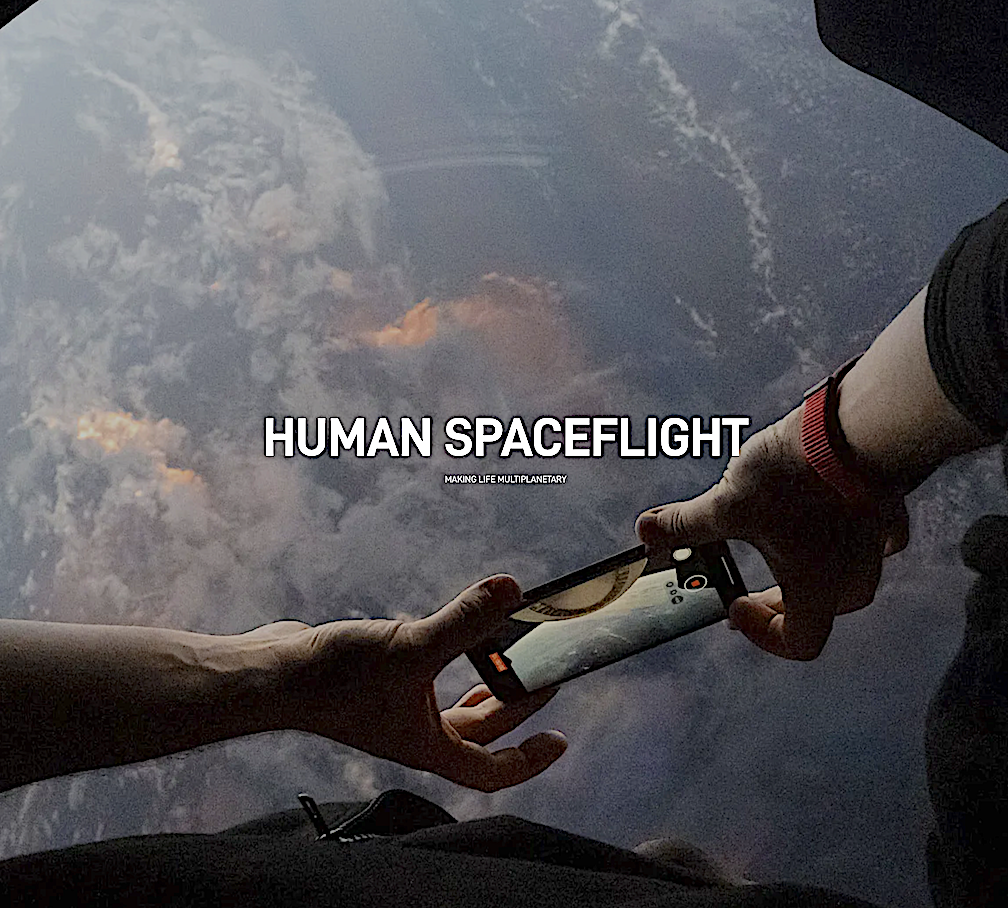
The first stage booster B1083 is making its fourth flight and will land on the drone ship “A Shortfall of Gravitas” about nine and a half minutes after launch. The Crew Dragon will return to a splashdown at sea.
The Dragon spacecraft supporting this mission previously flew Crew-1 to and from the International Space Station, and Inspiration4, the first all-civilian mission to orbit. This will be the fourth flight for the first stage booster supporting this mission, which previously launched Crew-8 and two Starlink missions. Following stage separation, Falcon 9’s first stage will land on the Just Read the Instructions droneship stationed in the Atlantic Ocean.
